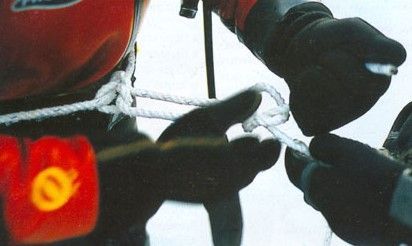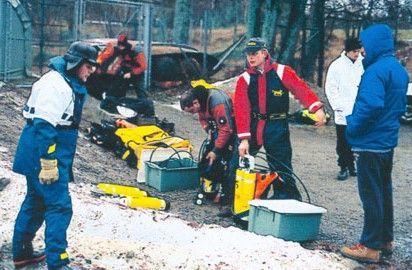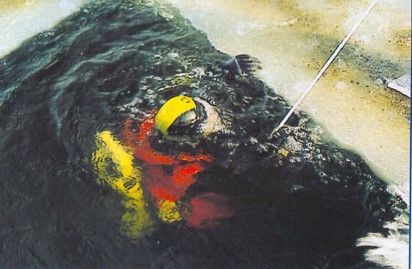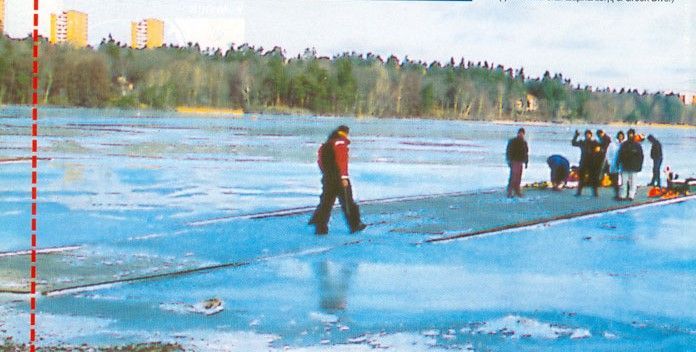HELLAS UNDERWATER EXPLORERS - SWEDEN 1998
1st Ice Diving Expedition to Sweden
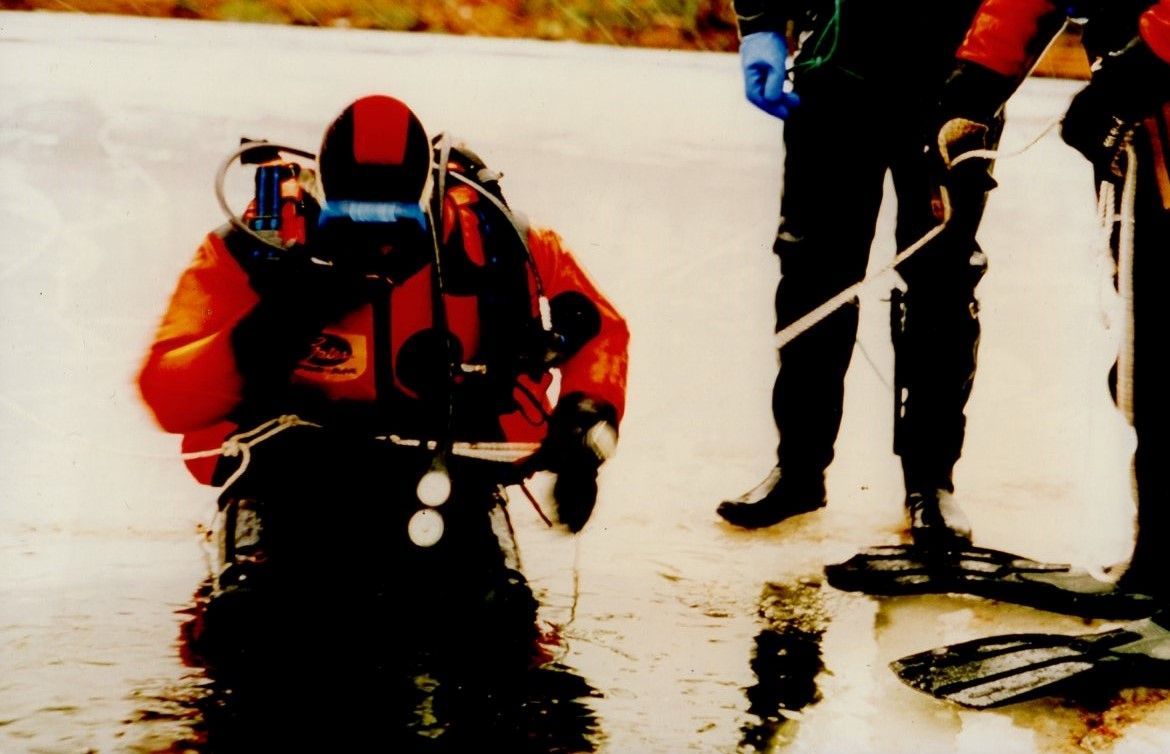
One of the most historic moments in Greek diving
The 1st Ice Diving Expedition to a lake in Sweden, organized and carried out by Hellas Underwater Explorers / George Petrou in February 1998, marked the beginning of a new era for technical diving, greatly influencing our diving activities.
At a time when technical diving was in its early stages, such an expedition seemed irrational and extreme in the eyes of many. Organizing it made us even more passionate. It was clearly a special form of diving that was very far from our homeland and the conditions we were accustomed to. Ice diving is an overhead diving in a closed, confined space with very particular environmental conditions.
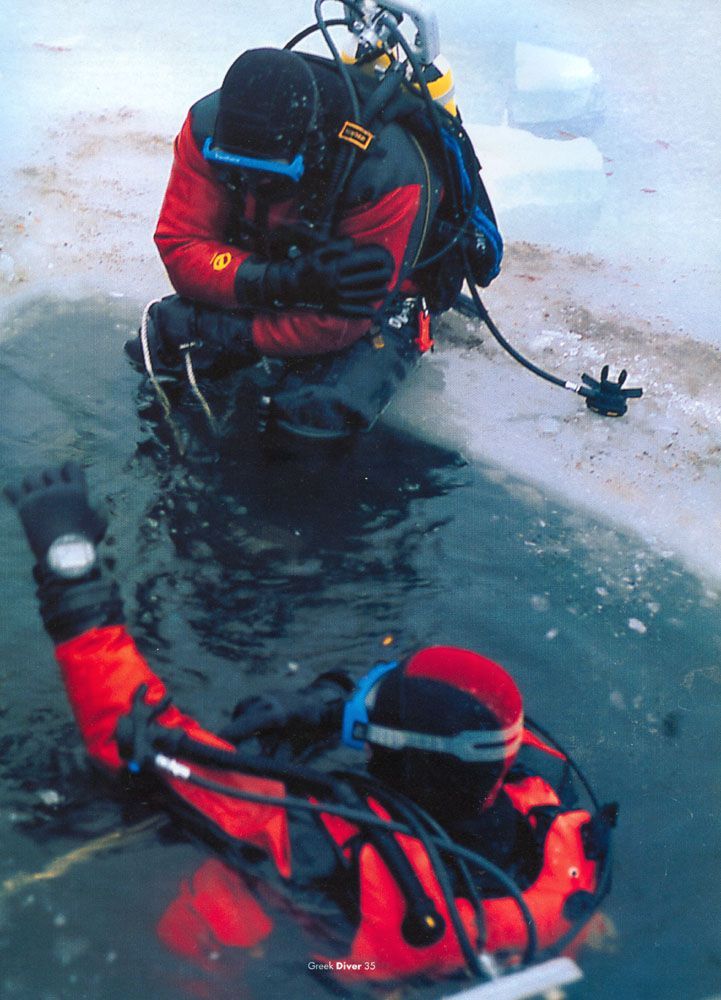
Ice as the basic element
A semi-transparent thick ceiling above us, a frozen sky, where you can descend and ascend only from specific points. The procedure is to break the ice and create a relatively large triangular hole (one or more) and continue to ensure that the water in the opening does not freeze.
The existence of a rope, following you tied to the surface or held by someone, is a basic safety measure both to avoid losing the exit route and for communication. And if you wonder why the hole must be triangular, it's because the corners help us support ourselves and exit with the help of two wooden sticks with nails (see photos below).
Frozen water
The temperature near 0°C requires the use of a dry suit with very good thermal protection. Neoprene dry suits are preferred. We can use Argon as heating gas or have an internal vest with battery heating. It's essential to have excellent maintenance of our suit regarding aquastop, etc. Rebreathers are ideal for these conditions due to "warm breathing".
Fresh water
Buoyancy in fresh water changes because there is no buoyancy from salt water (lack of salt). Less density equals less buoyancy. Therefore, our weights differ.
Decompression - Nitrogen elimination
Nitrogen loading, how much nitrogen dissolves within our tissues (Henry's Laws - Boyle, Dalton, Charles, etc.) determines how much decompression, stop depths and times we must perform during ascent for proper and adequate nitrogen elimination. We must ensure our dive computers are set for fresh water diving. Water pressure is lower than seawater.
Altitude
It's very common for lakes to be at altitude where atmospheric pressure is lower, meaning different pressure, so our dive computer must calculate this. Of course, there are special tables for altitude diving. And fresh water.
Lake - Muddy bottom
A factor that poses dangers is the muddy bottom that characterizes lake environments. It's like powder, which with the slightest clumsy movement or finning can create a dense and impenetrable sediment. A wall around us that completely disorients divers, creating problems both in buoyancy and psychology.
In this dangerous and stressful situation, composure, clear thinking, training, experience, methodology are required, and naturally the usefulness of the rope leading back to the entry opening is proven. Our lighting must have a very narrow beam to penetrate the dense sediment (which will take time to settle) and naturally there's no discussion about inadequate gas reserves. The buddy pair must never lose each other and the rope method by which one is tied to the other in this case proves lifesaving. Excellent buoyancy is required.
We could say countless things, but these are matters for a properly organized ice diving school.
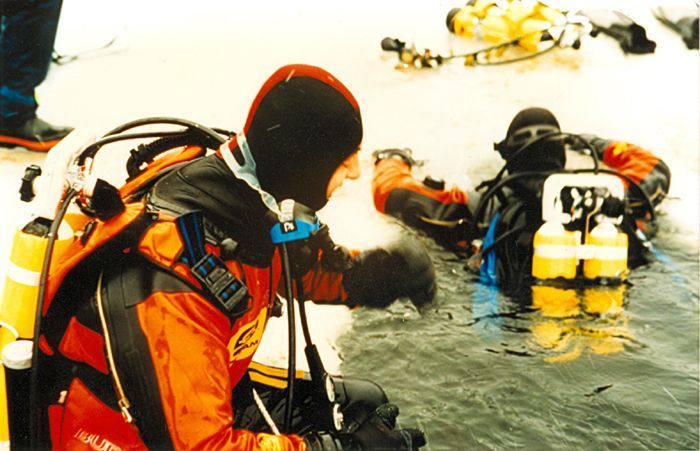
Arrival in Sweden
We arrive in Stockholm and after a visit to the legendary ship-museum Vasa, we visit the facilities of the professional pressure regulator manufacturing company Divex. We meet the owner and designer Mr. Lars Lungqvist who helped us tremendously both in material-technical support and our contacts for organizing the Ice diving school.
The manufacturing quality was evident and their performance in such extreme conditions was amazing. It was one of the reasons I then took on the representation of DIVEX pressure regulators for Greece and Cyprus and I truly never regretted it.
Theory
Our team gathered at the school and we did theory which, due to its uniqueness, was very interesting. New situations and techniques.
At the lake
The lake was large and frozen. A thick layer of ice was our ground and it was impressive how not only all of us walked on it but also a truck that transported our equipment. At many points of the ice, objects or animals or leaves were trapped and you could see them.

Holes
We started hitting with axes, a very laborious process since the thick ice was a tough nut to crack. We opened the triangular hole well and made sure the water in it wouldn't freeze again. One diver from the pair that would dive had the rope that served our return and was a means of communication. The pairs between them had a rope with a large rubber O-ring at the ends that they passed around their wrists so they wouldn't lose each other.
We made a final reminder of diving procedures, communication, checked our equipment and disappeared under the thick layer of ice.
Diving
The dive was absolute magic. This frozen sky above us that made the daylight look like a gentle sunset and the mysterious frozen environment was something unique. Below us was the lake's mud that blackened everything.
There was a resounding silence that made us talk incessantly with hand signals about this incredible alien, then for us, place. Buoyancy indeed required great attention and impressive was the fact that our breath contains ice crystals from the liquefied air. The existence of the rope to the surface and between us proved lifesaving since in this environment it's very difficult to find the exact return point.
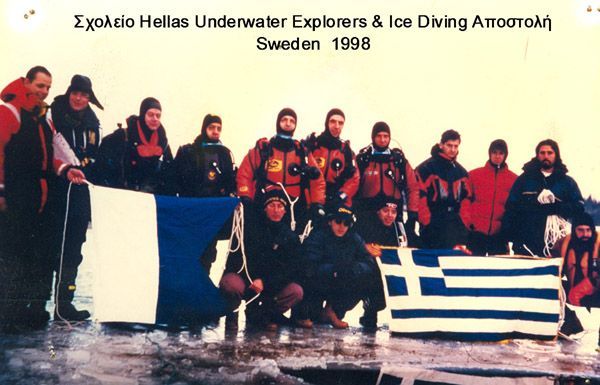
Ascent
The rope led us to the hole and although we were inside for a long time, we felt that very little time had passed and we wanted more.
Experience
An incredibly amazing experience, everything we lived through that week that we will never forget and reminded us that our beloved hobby has so much to offer us as long as we dare to engage with all the special forms of technical diving but with the necessary prerequisites of training and discipline.
We discovered that we had the ability to conquer new worlds far from the narrow perspective we had been forced into by the restricted environment of our homeland where diving was allowed, for those who don't know, in only two points of our country!!!
And so began a magical journey of explorations and discoveries that created friendships and contributed to the beginning of certification of some of the most important technical diving instructors.
Conclusions
Ice diving, or more correctly diving under ice, is clearly a special form of technical diving that requires training, knowledge, practical repetition, gradual acquisition of experience, equipment infrastructure, discipline and serious mentality.
It proved, as expected, to be a very spectacular and demanding school.
I must thank Mr. Lars Ljungqvist (Divex Regulators) who contributed greatly to the successful realization of our school.
Photo: George Vandoros
Share this





